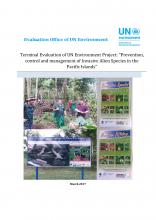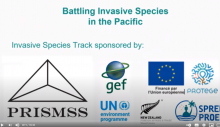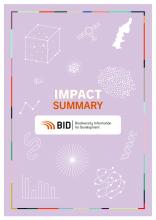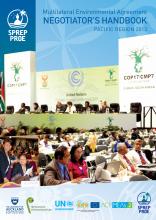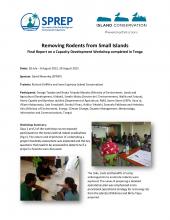Terminal evaluation of UN Environment project: Prevention, control and management on invasive alien species in the Pacific island.


Island and Ocean Ecosystems, BRB
Available Online
Invasive alien species represent an insidious and pervasive threat to the environmental, economic and human well-being of the Pacific islands. Pacific island ecosystems make up one of the worlds important biodiversity hotspots, with high numbers of endemic species that are particularly vulnerable to extinction due to their limited habitat and isolation.|This book is intended to serve as a practical guide, calling attention to the need to link emergencies, disasters and development, not only in policy statements, but in practical ways. The book identifies physical and social factors and processes determining disaster vulnerability and offers the reader a range of vulnerability-reduction options in development and disaster mitigation. The book covers the main relief and response technologies for a range of natural and technological disasters, and deals with community participation, health education, training and other social aspects relevant to the protection of health and the environment in emergencies and disasters.|The UNEP/GEF Prevention, Control and Management of Invasive Alien Species in the Pacific Islands project also known as the IAS project, commenced on 12 September 2012 and was due for completion on 30 September 2016, following an extension of one year. The project was designed to provide support to Pacific Island countries in their national efforts to implement the Guidelines for Invasive Species Management in the Pacific a Pacific Strategy for managing pest, weeds and other invasive species (Tye 2009) which were developed and adopted as the regional strategic framework for invasive species management in 2009. Ten Pacific Island countries originally participated in the IAS project, these being the Cook Islands, Federated States of Micronesia, Kiribati, Marshall Islands, Niue, Palau, Papua New Guinea, Samoa, Tonga and Vanuatu. These were reduced to nine countries with the withdrawal of Papua New Guinea following the Mid-Term Review due to issues related to the countrys readiness to engage with the project. The project was therefore, responsible for delivering of support to a culturally, geographically and economic diverse set of Small Island Developing States (SIDS) spread across the vast geographical scope of the Pacific Ocean. The project was implemented by the UN Environment as the Implementing Agency (IA) and Executed by the Secretariat of the Pacific Regional Environment Programme (SPREP) as the Executing Agency (EA). In-country sub projects and activities were facilitated by National Project Coordinators and overseen by national Invasive Species Coordinating Committees. Its goal "to conserve ecosystems, species and genetic diversity in the Pacific region" is broad and aspirational and is backed by the Objective "to reduce the environmental economic and human health impacts of invasive alien species in both terrestrial and marine habitats in the Pacific region". The Project consisted of 5 core components: Building foundations for sustainable Invasive Alien Species (IAS) management by generating awareness and support, building institution and human capacity and strengthening legislation, policy and protocols. Defining problems, prioritisation and decision making by improving baseline information on IAS distribution and status, establishing systems to assess risk and prioritise action and developing or utilising effective management techniques. Taking management action through improved bio-security and border protection, direct management action through eradication and application of best practice methods and restoring ecosystems after IAS management. Undertaking effective monitoring and evaluation of the project.| Establishing effective and efficient project management and governance. This Terminal Project Evaluation is undertaken by the Evaluation Office of the UN Environment in order to assess the effectiveness of the project and its likely future impact on the state of IAS management in the region and its likely impact on invasive species and the environmental health of the participating countries. Further, the report aims to discern lessons and offers recommendations which may help improve the development and implementation of similar multi-country projects in the future both in the Pacific region and globally.
